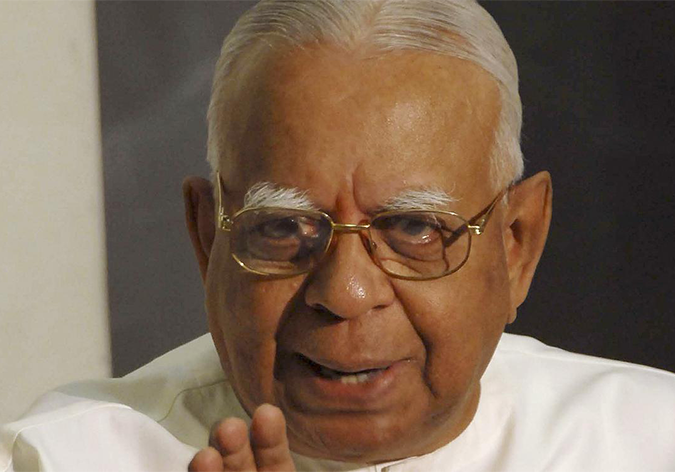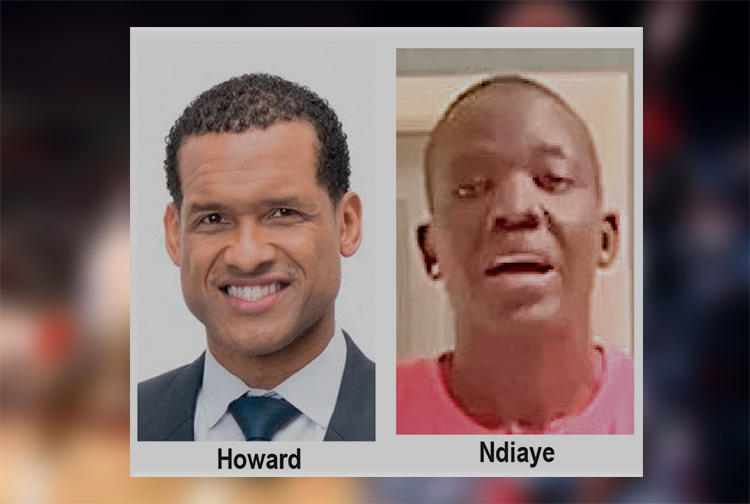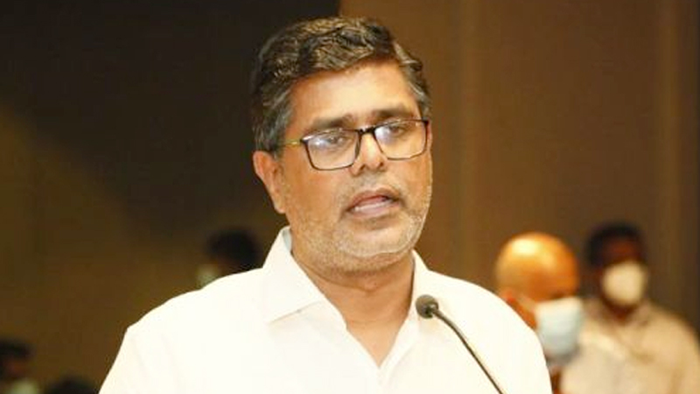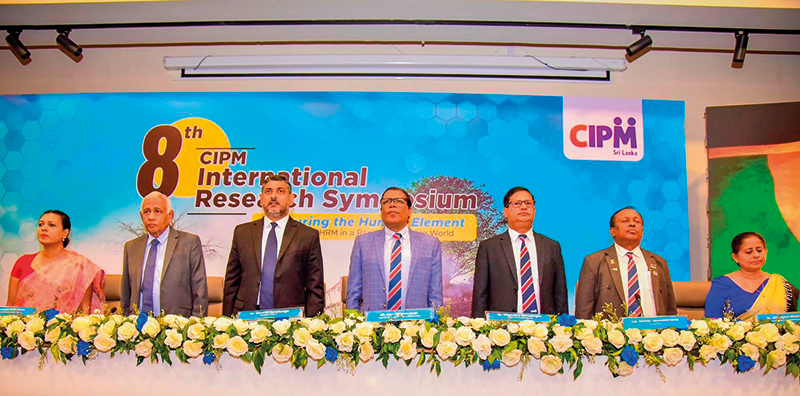News
TNA opposes demographic changes in East

TNA Trincomalee District MP R Sampanthan has, in a letter to President Ranil Wickremesinghe, said that demographic changes are to be implemented to convert the Eastern Province into a majority Sinhala Province and to disrupt linguistic contiguity between the Northern and Eastern Provinces.
Full text of the letter: I am informed that in recent times certain meetings have been held in Trincomalee wherein activities relating to the above two institutions Thirukoneshwaram – Dakshana Kailash and Trincomalee Harbour have been discussed and certain decisions are to be taken.
May I first deal with
1. Thirukoneshwaram – Dakshana Kailash the ancient temple was destroyed in 1623 by the Portuguese Viceroy Constantain De Saa. The temple is said to have had 1,000 pillars, three Rajagopurams, two abutting the sea on either side and one in the center.
Portuguese historians at the time of Rev Queroz stated that most of the Hindus in the world including those in India venerated this temple more than any other temple. This temple was regarded by them as the ‘Rome of the East”.
2. Sir Paul Peris the eminent Sri Lankan has in his historical works has stated that long before the arrival of Vijaya in Ceylon, there existed in Ceylon five Eashwarms of Lord Siva – Naguleshwaram and Thirukethesewaram in the North, Thirukoneshwaram in the East, Muneshwaram in the West and Thondeshwaram in the South. This temple is said to be on the decline while the other four temples are flourishing. These five Siva temples are said to have been constructed all around Ceylon in the North, East, West and South to protect the country. Vijaya was the precursor of the Sinhala Race.
3. Indian Prime Minister Charan Singh who went to Thirukoneshwaram to worship as he alighted from the Vehicle uttered the following words ‘I have come to Dakshana Kailash’. The antiquity and Sanctity of this temple needs to be preserved.
In recent days there have been some proposals which I wish to bring to your notice. Thirukoneshwaram is situated inside the Fort Fredric. One enters the area from the main gate on the front of the Fort. Some decades ago some Army personnel occupying part of the Fort Fredric constructed a statue of Lord Buddha on the part of the land occupied by them. People who wished to worship at Thirukoneshwaram and Lord Buddha entered the Fort through the main gate and worshipped. There was no other route to enter the Fort and worship Lord Buddha and Thirukoneshwaram.
In recent days a proposal has been made that a new route be opened to Lord Buddha’s Statue and from there to Thirukoneshwaram. This is not necessary and can result in persons encroaching on the route and occupying land which can only result in the sanctity and piety of Thirukoneshwaram Temple and Lord Buddha’s statue being diminished.
Some years ago some traders from Ratnapura were brought and installed on the route to koneshwaram by a former member of Parliament which resulted in the sanctity and Piety of this area being diminished. Meat and Fish were cooked in these temporary structures by these persons. A decision was taken that these persons be shifted from this area but not been implemented.
“I KINDLY REQUEST THAT THE OPENING OF THIS NEW ROUTE ON A SIDE UPTO LORD BUDDHA STATUE UNTIL KONESHWARAM BE STOPPED”
This will only result in evil being done. I am also informed that some persons claiming to be Archeological officials have visited this area and they could have their own plans. Former President proclaimed the Eastern Province as an area of Archeological investigation and appointed a Presidential Task Force consisting of persons all Sinhalese and Buddhist to perform the function inclusive of identification and allocation of state land to Buddhist temples which make such claim.
I sent the former president a letter copy of which I annex hereto subsequent to which as far as I am aware no further action have been taken. This proposal also may be activated.I am also informed that certain proposals have been discussed to change District Secretaries and Divisional Secretaries areas in such a way as to severely distort Historical Habitation of land for generations and centuries by Tamils.
Under the Indo Sri Lanka Agreement an International Treaty the Northern and Eastern provinces were accepted as areas of Historical Habitation of Tamil and Tamil speaking people.
I am now informed that in the Northern extremity of Trincomalee a larger chunk of land is said to be withdrawn from the Trincomalee District and replaced by a large piece of land from the Anuradhapura District in the North Central Province. Primary purpose of this is to rupture the Linguistic Contiguity of the Northern and Eastern Provinces. A similar proposal is to be implemented in the south of the Trincomalee District bringing into the Eastern Province a large portion of land from the Polanaruwa District whilst at the same time removing and attaching to the Polunaruwa District a large block of land from the Trincomalee District Eastern Province. This will result in the disruption of the maritime boundaries both to the North and South with the possibility of grave repercussions and grave consequences to the Trincomalee Harbour said to be the second best in the world. Neither the Tamil speaking residents living in these areas nor our neighbour or closest countries would approve of this step. The whole objective of this is to extinguish the linguistic contiguity between the North and eastern provinces on both North and South of Trincomalee District.
The conversion of Eastern Province into a majority Sinhala Province and the disruption of the Linguistic Contiguity between the Northern and Eastern Provinces have been a long term objective of the majoritarian Sinhala Governments.
I wish to record instances of such thinking.
1. In early 1975 large chunks of land in the Pulmoddai and Thenamaravadi Villages and other lands were transferred to Anuradhapura Divisional Secretary’s Division under whose jurisdiction land was alienated only to Sinhala not a single Tamil or Muslim was given land. The land continued to be under the control of the Divisional Secretary Anuradhapura until there was a change in government. This position was opposed by the Tamil people who insisted that land from Trincomalee District be brought back to Trincomalee District. The Tamils through these steps ensured the continuance of the Linguistic Contiguity even though the land which was barren land was taken over and occupied entirely by Sinhalese.
2. In late 1984 Tamils in Thenmaravadi Village were attacked some were killed many injured and houses were burnt and property looted. The Tamil people fled from Thenamaravadi village to Mullathevu only some of them have returned.
In seeking to resolve the issue pertaining to the unit of devolution a former government proposed the trifurcation of the Eastern Province said to be as follows.
1. Amparai Majority Muslim Area
2. Batticaloa Majority Tamil Area
3. Trincomalee Majority Sinhala Area
The new proposal to bring land on the North from Anuradhapura from the North Central Province and on the South from Polanaruwa in the North Central Province are all intended make the Sinhala people the majority in the Eastern Province particularly a majority in the Trincomalee District. All these efforts have been resisted and every one of the districts in the Northern and Eastern provinces is majority Tamil speaking, and not a single District is majority Sinhala.
This is in conformity with the position that Tamils / Tamil speaking people are a people with the North and East being their Historical Habitation entitled to internal self – determination within the frame work of a United and Undivided Sri Lanka. This is what the Tamils / Tamil speaking people are demanding a political solution. This position is affirmed by all democratic verdicts since 1956.
I strongly urge that the issue be resolved on this basis rather than steps being taken which will only prolong the problem.”
News
US sports envoys to Lanka to champion youth development

The U.S. Embassy in Colombo welcomed the U.S. Sports Envoys to Sri Lanka, former National Basketball Association (NBA) and Women’s National Basketball Association (WNBA) players Stephen Howard and Astou Ndiaye, from June 8 through 14.
The Public Diplomacy section of the U.S. Embassy said that it would launch a weeklong basketball program intended to harness the unifying power of sports, made possible through collaboration with Foundation of Goodness and IImpact Hoop Lab.
While in Sri Lanka, Howard and Ndiaye, both retired professional basketball players, will conduct a weeklong program, Hoops for Hope: Bridging Borders through Basketball. The Sports Envoys will lead basketball clinics and exhibition matches and engage in leadership sessions in Colombo and Southern Province for youth aged 14-18 from Northern, Uva, Eastern and Western Provinces, offering skills and leadership training both on and off the court. The U.S. Envoys will also share their expertise with the Sri Lanka Basketball Federation, national coaches, and players, furthering the development of basketball in the country. Beyond the clinics, they will collaborate with Sri Lankan schoolchildren to take part in a community service project in the Colombo area.
“We are so proud to welcome Stephen and Astou as our Sports Envoys to Sri Lanka, to build on the strong people-to-people connections between the United States and Sri Lanka,” said U.S. Ambassador Julie Chung. “The lessons that will be shared by our Sports Envoys – communication, teamwork, resilience, inclusion, and conflict resolution – are essential for leadership development, community building, equality, and peace. The U.S. Sports Envoy program is a testament to our belief that sports can be a powerful tool in promoting peace and unity.”
News
Rahuman questions sudden cancellation of leave of CEB employees

SJB Colombo District MP Mujibur Rahuman in parliament demanded to know from the government the reasons for CEB suspending the leave of all its employees until further notice from Thursday.
MP Rahuman said that the CEB has got an acting General Manager anew and the latter yesterday morning issued a circular suspending leave of all CEB employees with immediate effect until further notice.
“We demand that Minister Kanchana Wijesekera should explain this to the House. This circular was issued while this debate on the new Electricity Amendment Bill was pending. There are many who oppose this Bill. The Minister must tell parliament the reason for the urge to cancel the leave of CEB employees,” the MP said.However, Speaker Mahinda Yapa Abeywardena prevented Minister Wijesekera responding to the query and said that the matter raised by MP Rahuman was not relevant.
News
CIPM successfully concludes 8th Annual Symposium

The Chartered Institute of Personnel Management (CIPM) successfully concluded the 8th Annual CIPM Symposium, which took place on 31st May 2024. Themed “Nurturing the Human Element—Redefining HRM in a Rapidly Changing World,” the symposium underscored the pivotal role of human resource management (HRM) in today’s dynamic global landscape. Since its inception in 1959, CIPM has been dedicated to advancing the HR profession through education, professional development, and advocacy, solidifying its position as Sri Lanka’s leading professional body for HRM.
Ken Vijayakumar, the President of the CIPM, graced the occasion as the chief guest. The symposium commenced with the welcome address by the Chairperson, Prof. Arosha Adikaram, followed by the Web Launch of the Symposium Proceedings and Abstract Book by the CIPM President. The event featured distinguished addresses, including a speech by Chief Guest Ken Vijayakumar, President of CIPM, and an address by Guest of Honor Shakthi Ranatunga, Chief Operating Officer of MAS Holdings Pvt. Ltd., Sri Lanka.
The symposium also featured an inspiring keynote address by Prof. Mario Fernando, Professor of Management and Director of the Centre for Cross Cultural Management (CCCM) at the University of Wollongong, Australia.
Vote of Thanks of the inauguration session was delivered by Dr. Dillanjani Weeratunga, Symposium Co-chair.
The symposium served as a comprehensive platform for researchers to present their findings across a wide range of critical topics in HRM. These included Cultural Diversity and Inclusion, Talent Development and Retention, Ethical Leadership and Corporate Social Responsibility, Adapting to Technological Advancements, Mental Health and Well-being at Work, Global Workforce Challenges, Employee Empowerment, and Reskilling and Upskilling.
The plenary session was led by Prof. Wasantha Rajapakse. Certificates were awarded to the best paper presenters during the valedictory session, followed by a vote of thanks delivered by Kamani Perera, Manager of Research and Development.
The annual symposium of CIPM was a truly inclusive event, attracting a diverse audience that spanned undergraduates, graduates, working professionals, research scholars and lecturers. This widespread interest highlights the symposium’s significance in the field of HRM, offering a unique opportunity for everyone to network and learn from scholarly brains.The CIPM International Research Symposium was sponsored by Hambantota International Port, Sri Lanka Institute of Information Technology (SLIIT), E B Creasy & Co. PLC, and Print Xcel Company.












